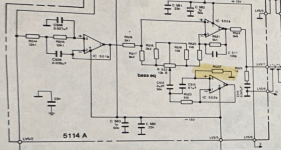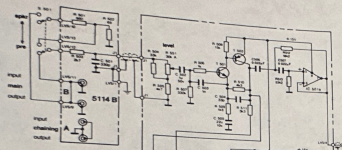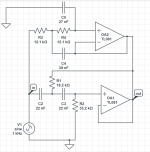I own ADS L1590 speakers. They had bi-amplifier modules as an option for using them as the active speakers. The module internally consists of active crossovers and amplifiers for low- and high-pass sections. I'm going to enable their active biamplification mode. But I plan to use the better power amplifiers with the DSP instead of finding the very rare complete modules. So, the objective of this project is to reverse engineering the characteristic of the active crossovers. However, I'm not a professional electronics engineer or electrician, I have basic knowledge of electronics. I have tried simulations of the active crossovers. Here are the results.
Low-pass section:



High-pass section:



Combined response:



Could anyone verify my results? And how to obtain the corner frequencies and Q factors, I believer they are second-order, which are required to be used in setting the DSP?
Low-pass section:



High-pass section:



Combined response:



Could anyone verify my results? And how to obtain the corner frequencies and Q factors, I believer they are second-order, which are required to be used in setting the DSP?
The slopes of both sections do simulate to be 40dB per decade (second order), so that part is ok.
Appears that you have Sallen-Key filters, so see this Wiki, which will give Q and f0 from the component values.
https://en.wikipedia.org/wiki/Sallen–Key_topology
Appears that you have Sallen-Key filters, so see this Wiki, which will give Q and f0 from the component values.
https://en.wikipedia.org/wiki/Sallen–Key_topology
Could anyone verify my results? ...
You could verify yourself at the following link:
http://sim.okawa-denshi.jp/en/OPseikiLowkeisan.htm